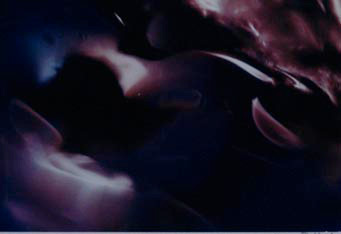Wynn Bullock
(1902 – 1975)
- View Wynn Bullock Biography -
Searching deeper into the nature of things, I ask myself what makes one person more interesting visually than another person or one tree different or more meaningful than another tree.
– Wynn Bullock
In the 1930s, Wynn Bullock was pursuing a promising career as a concert tenor when his interest in the visual arts, particularly photography, blossomed. Late that decade, he studied photography with Edward Kaminski at the Los Angeles Art Center School and by 1949 was concentrating on the medium as his chosen form of creativity.
Bullock was particularly interested in the photography of Moholy-Nagy and Edward Weston and deeply impressed by the work of Alfred Korzybski, especially his theory that the names people attach to objects filter and distort human perceptions of reality. Bullock sought to express his philosophical concepts about reality through his photographs. For example, he explored his interest in time, space and change through long exposures, multiple exposures and superimposed images.
His theory of opposites — that nothing can exist without its opposite — found expression in the juxtaposition of contrasting visual elements. In 1948, the artist became close friends with Weston, a relationship that would influence him profoundly. Bullock vacillated between manipulative and straight modes of taking photographs, alternating between abstraction and realism. His luminous images of nude children and females and of primeval landscapes suggest the phantasms of a cosmos dreaming. All of Bullock’s photographs depict the immanent relationship between the inner world of ideas and the outer world of events.
Wynn Bullock continues to be known as one of America’s most innovative and experimental photographers. Bullock felt that his photographs were more than surface reflections, that they portrayed the interaction of “space and time” defined by light. Wynn Bullock devoted most of his life to exploring the natural universe and man’s relationship to it; the vehicle of his search was the photograph. The penetrating, enigmatic, and almost mystical nature of his images is accomplished through formal beauty matched with provocative imagery. Bullock wanted to jolt people to new heights of visual and self-awareness by encouraging them to relate to nature directly, unencumbered by traditional modes of visual and abstract thinking. His dramatic photographs have been characterized as showing the inner essence of nature, powerfully reflecting its mysterious beauty on a level extending beyond the everyday.
selected publications:
The Widening Stream, Richard Mack
Wynn Bullock, Text by Barbara Bullock
Wynn Bullock: 20 Color Photographs/Light Abstractions.
Wynn Bullock: Photography, A Way of Life
The Photograph as Symbol
Wynn Bullock, Aperture, 1976
